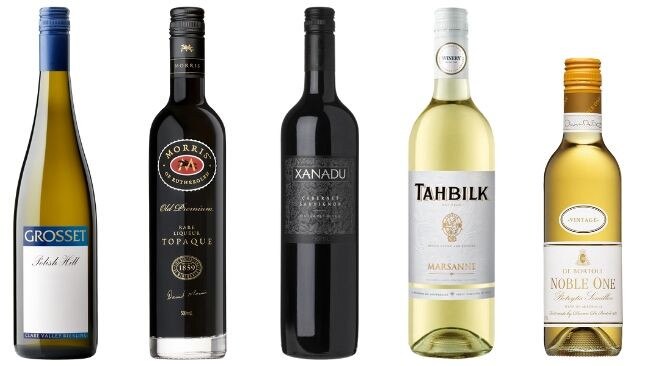A guide to cellaring white, red and dessert wine
Thought you could only cellar expensive, red wines? We asked the experts everything you need to know about starting a collection— including what bottles you should buy first.
Hibernation
Don't miss out on the headlines from Hibernation. Followed categories will be added to My News.
Wine lovers may already have their favourite bottles stashed away for a rainy day, but if you’re new to cellaring, Dan Murphy’s head of fine wine Andrew Shedden shares some must know tips before starting a wine collection.
“Traditionally bigger, fuller-bodied red wines are the easiest and best ones to cellar,” he said.
“Typical wine characteristics you should look for is tannin and acid. They are the structural elements that make a wine good for ageing.”
A good indicator to tell if your wine is acidic is it typically makes you salivate after the first sip, while tannic wines dry your mouth.

Mr Shedden said having wine from our best-known regions was essential for any Australian collection.
“A Barossa Valley shiraz or a cabernet sauvignon from Coonawarra or the Margaret River are good picks,” he said.
“If you wanted a couple of imports, then a Bordeaux (French region cabernet sauvignon/merlot blend) or an Italian Barolo are also good as some of these wines have been made to age.”
White wines can also be cellared but it depends on the grape variety.
“Chardonnay is great to age, just look for ones that have been exposed to oak. The fruit-forward wines wouldn’t age well,” he said.
“Riesling is another as it’s quite high in acid, one of the structural components needed for ageing.”
Cellaring wine doesn’t require a fancy, climate controlled fridge, either, although it does help.
“Wine loves consistency and little temperature variation, so a wine fridge can help manage this,” Mr Shedden said.
“If you don’t have one make sure you’re storing the wine in a place that doesn’t fluctuate in temperature or light. Don’t store in the attic, near a window or on the top of your fridge.”
Corked wines should rest on the side, to keep the cork wet, while screw caps should remain upright.

Mr Shedden doesn’t believe wine collections should be made up exclusively of expensive wines.
“No you definitely don’t (need expensive wine), but if you follow the style characteristics (tannin and acid) you’ll find there are more affordable wines that will benefit from ageing,” he said.
“Having said that, the further down the price spectrum you go, you’ll find a lot more fruit-forward wines that are designed to drink now.”
Dessert and fortified wines could also be aged, especially botryitised wines from French regions Sauternes and Barsac, as well as champagne and sparkling wine.
Although Mr Shedden said champagne houses often aged the wine prior to release.
One way to learn how your wine will age is to buy half a dozen bottles of a particular variety, crack a bottle before cellaring, and then open a new bottle each year to compare tastes.
“With cellaring there aren’t any hard and fast rules on how long you should keep a wine,” Mr Shedden said.
“Check with the winery or in store as to how long to cellar it.”
WINE COLLECTION MUST HAVES
White:
Tahbilk Marsanne, 2018 — $12.99
Tyrell’s Vat 1 Semillon 2014— $74.99
Red:
Xanadu Margaret River Cabernet Sauvignon 2018— $34.99
Clonakilla Shiraz Viognier 2018— $109.99
Fortified/ dessert
De Bortoli Noble One Botrytis Semillon 375ml 2016— $31.99
Morris Old Premium Rare Liqueur Topaque 500ml— $79.99
MORE NEWS
CAN YOU GET A DECENT RED UNDER $15?
MELBOURNE’S BEST BARS
HOW TO CHOOSE WINE IN BOTTLESHOP
